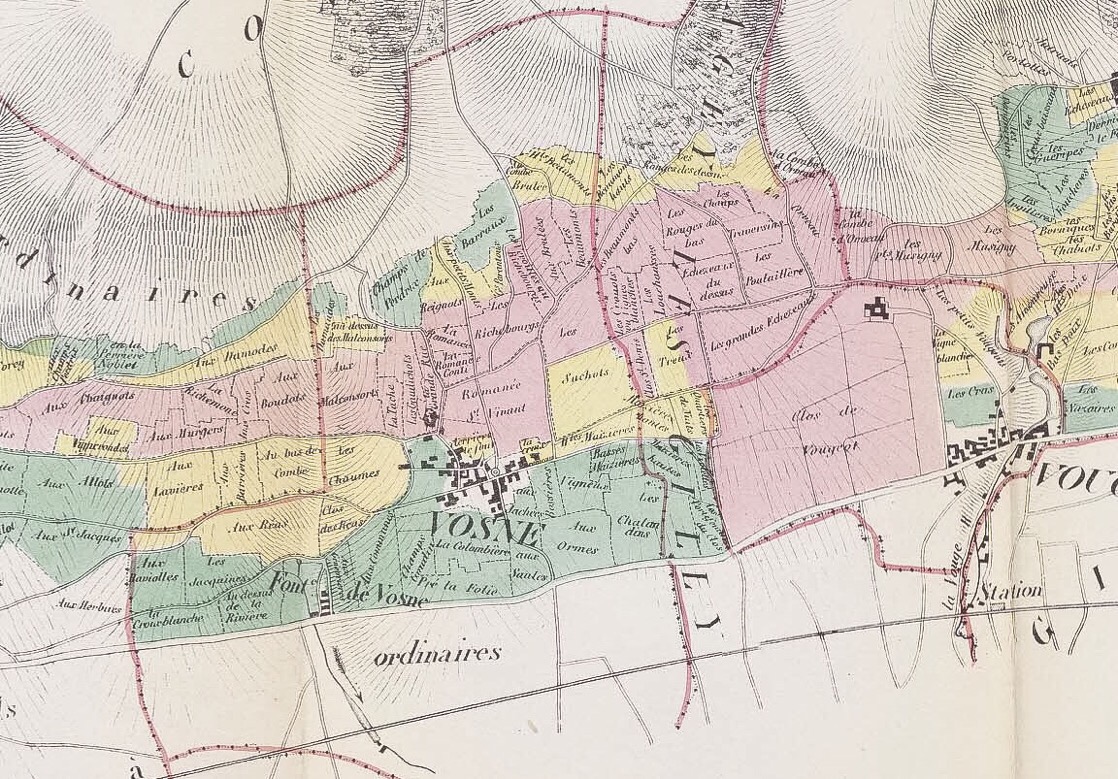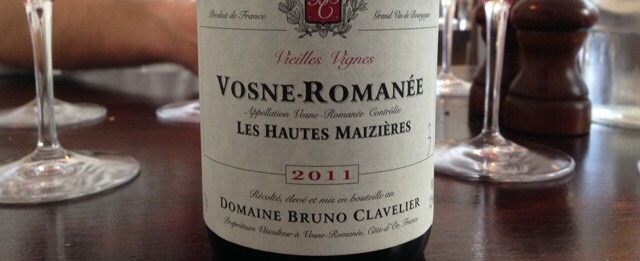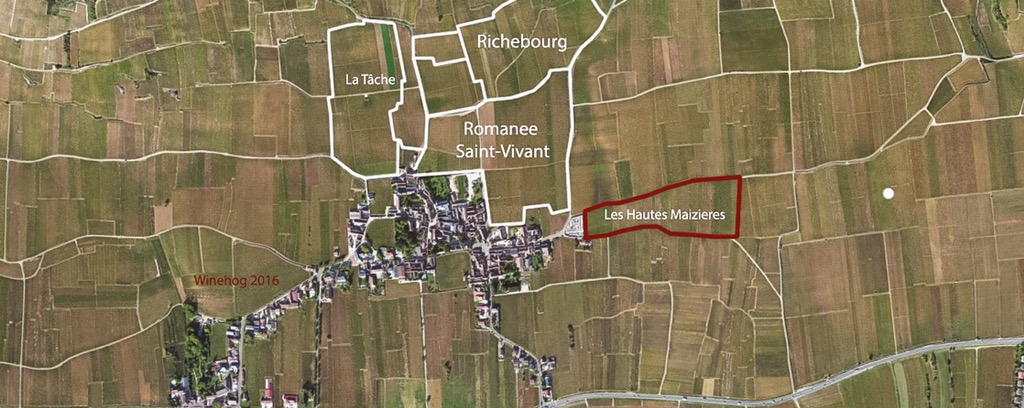There are many fine village terroirs in Vosne-Romanee producing some of the very best village wines from Burgundy.
If we go 20 or 30 years back most village wines were blends made from several vineyards but in recent years more and more single vineyard village wines have gained a stronger reputation and position in the market.
It’s therefore interesting to see the individual village terroirs in an historic perspective, to establish more knowledge about the quality of the different village terroirs of Vosne-Romanee.
If we take a look at the old classifications the following village terroirs stand out: Aux Reas, Hautes Maizieres, Basses Maizieres and the upper part of Aux Raviolles. It should be noted that village terroirs like Clos Goiliotte, Clos du Chateau and Clos d’Eugenie were not mentioned in the old classifications.
In this article I will focus on Les Hautes Maizieres one of my favourite village terroirs in Vosne-Romanee.
Les Hautes Maizieres – in two appellations
Les Hautes Maizieres is located both in the Vosne-Romanee and the Flagey Echezeaux appellation – below Les Suchots in the Vosne part, and below Echezeaux Clos Saint Denis in the Flagey Echezeaux end – see map below.
There are 9 plot in the Vosne end of Les Hautes Maizieres totalling 2.2505 ha. The Flagey-Echezeaux end (Maizieres Hautes) holds 12 plots equivalent to 1.4315 ha. In total 21 plots and 3.6820 ha.
Les Hautes Maizieres is … not surprisingly … located above Les Basses Maizieres, and while this vineyard also is highly regarded in the old classifications … Les Hautes Maizieres seems to enjoy most attention today.
Mazieres highly regarded by Lavalle
Hautes Maizieres and Basses Maizieres were classified as Deuxiéme Cuvée by Lavalle1, alongside more prominent vineyards like Clos des Reas, Aux Reignots and Les Chaumes.
Both the upper and lower part of Maizieres were classified higher than vineyards like Les Petits Monts and Parantoux.
This shows that Hautes Maizieres and Basses Maizieres were well know for producing very good wines in 1855 … but also – in my view – that the Lavalle classification perhaps was somewhat biased towards the vineyards located lower on the slope.
It should be noted that both the Vosne-Romanee and Flagey-Echezeaux end of Hautes Maizieres were classified as Deuxiéme Cuvée by Lavalle1.
The 1861 classification
The 1861 Classification2 of the Burgundian climats was very detailed, and although there are some questionable classifications in most appellations it comprises some valuable information of the quality of the terroir – on a cadastre detailed level.
In Vosne-Romanee most of the village vineyards were classified 3mes Cuvées but a few plots were classified as 2mes. The climats classified as 2mes included Les Hautes Maizieres and Aux Réas, and then the upper part of Aux Raviolles in the lower southern end of the appellation – see map below2.
Looking at the Flagey classification this end of Hautes Mazieres was also classified as 2mes
Rodier confirms the Maizieres classification
Hautes Maizieres was classified as Deuxiémes Cuvée by Rodier3 in 1920, thus confirming the high quality of this climat.
Rodier1 placed vineyards like Les Chaumes, Clos des Réas and Cros Parantoux under Deuxiéme Cuvée … so other quite prominent vineyards at this level in the classification.
Today at least Cros Parantoux is regarded as one of the top 1er crus, after a lot of hard work by Henri Jayer in the 1950s. So the classification is not static, and possibly influenced by the ownership at the time of the classification.
Hautes Maizieres … a victim of location
While Les Hautes Maizieres was highly regarded by all the old classifications from Lavalle to Rodier it missed the final call – and was only awarded village status in the Vosne AOC classification in 1936.
Perhaps the location below Les Suchots and the fact that the vineyard is divided between Vosne-Romanee and Flagey-Echezeaux played a role in this decision. Looking at the lesser parts of Chaumes and Suchots … it’s certainly questionable if these areas deserve a higher classification than Les Hautes Maizieres … in my view at least.
But regardless … I would not say that Les Hautes Maizieres would be a big 1er cru, and not even say it should be promoted to 1er cru … but the quality as a climat would certainly be considered for a 1er cru status … if it was not in the Vosne-Romanee appellation.
You need to login to read the rest of this article. If you are not a subscriber, use the subscribe function and sign-up.



 - A true vin d’émotion – a Burgundy of passion
- A true vin d’émotion – a Burgundy of passion - A truly hedonistic wine – lively and enjoyable
- A truly hedonistic wine – lively and enjoyable - A vivacious wine for pure indulgance
- A vivacious wine for pure indulgance - A potential vin d´émotion - frais et léger
- A potential vin d´émotion - frais et léger